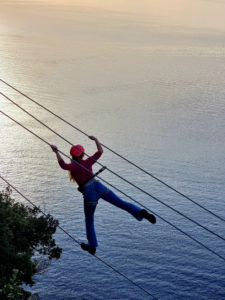Via Ferrata
Living the “Via Ferrata Spirit”
Climbing mountains requires fitness, experience, situational awareness, adequate equipment, and lot more…and even then it is not a given that you will manage to climb the hardest big wall routes. You need time, money and a reliable climbing partner. And when all this is in place, the risk of a fall with injuries or worse is still looming in the background.
